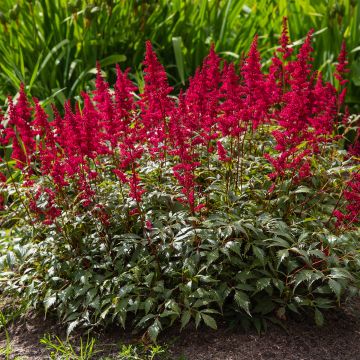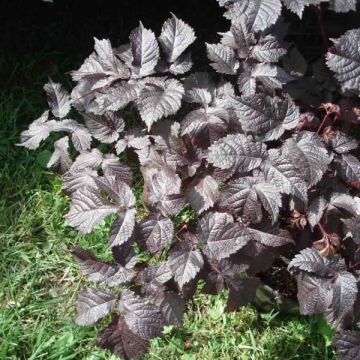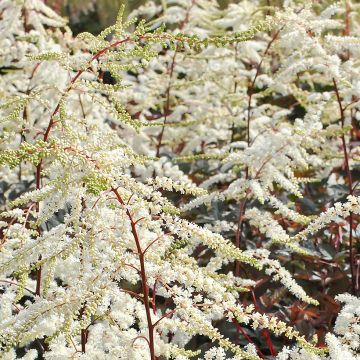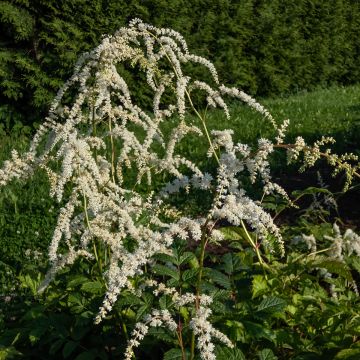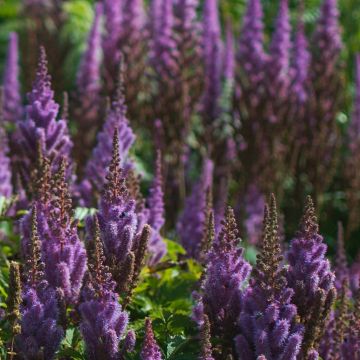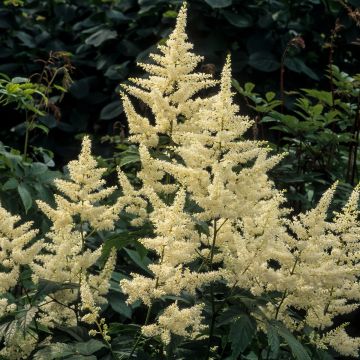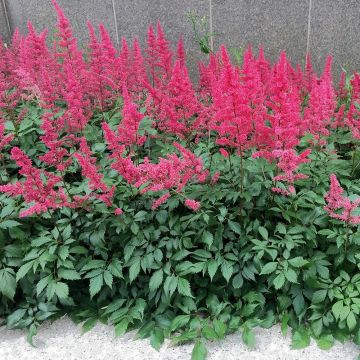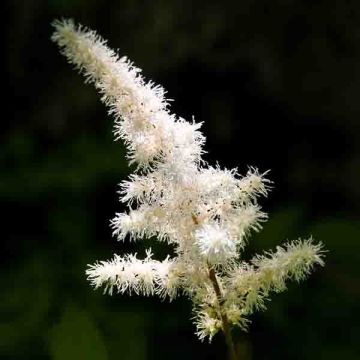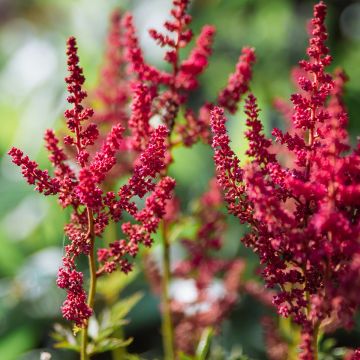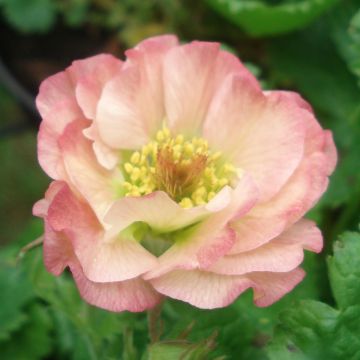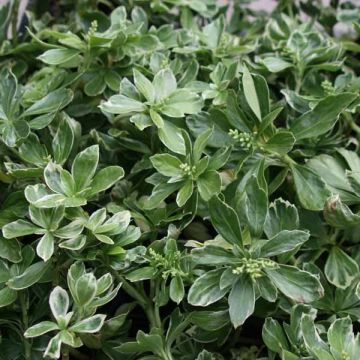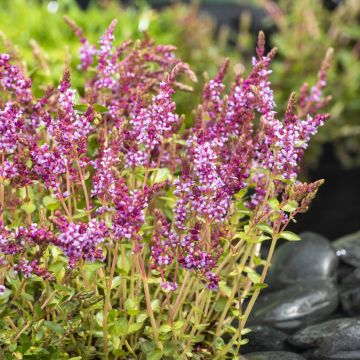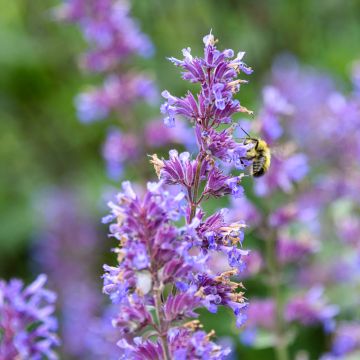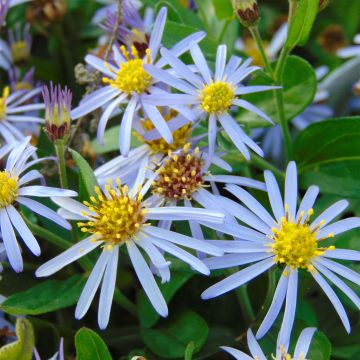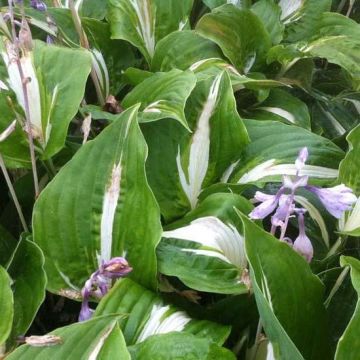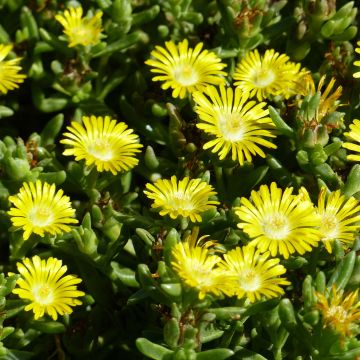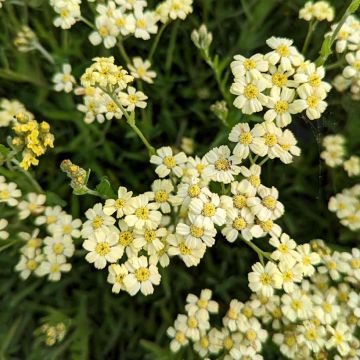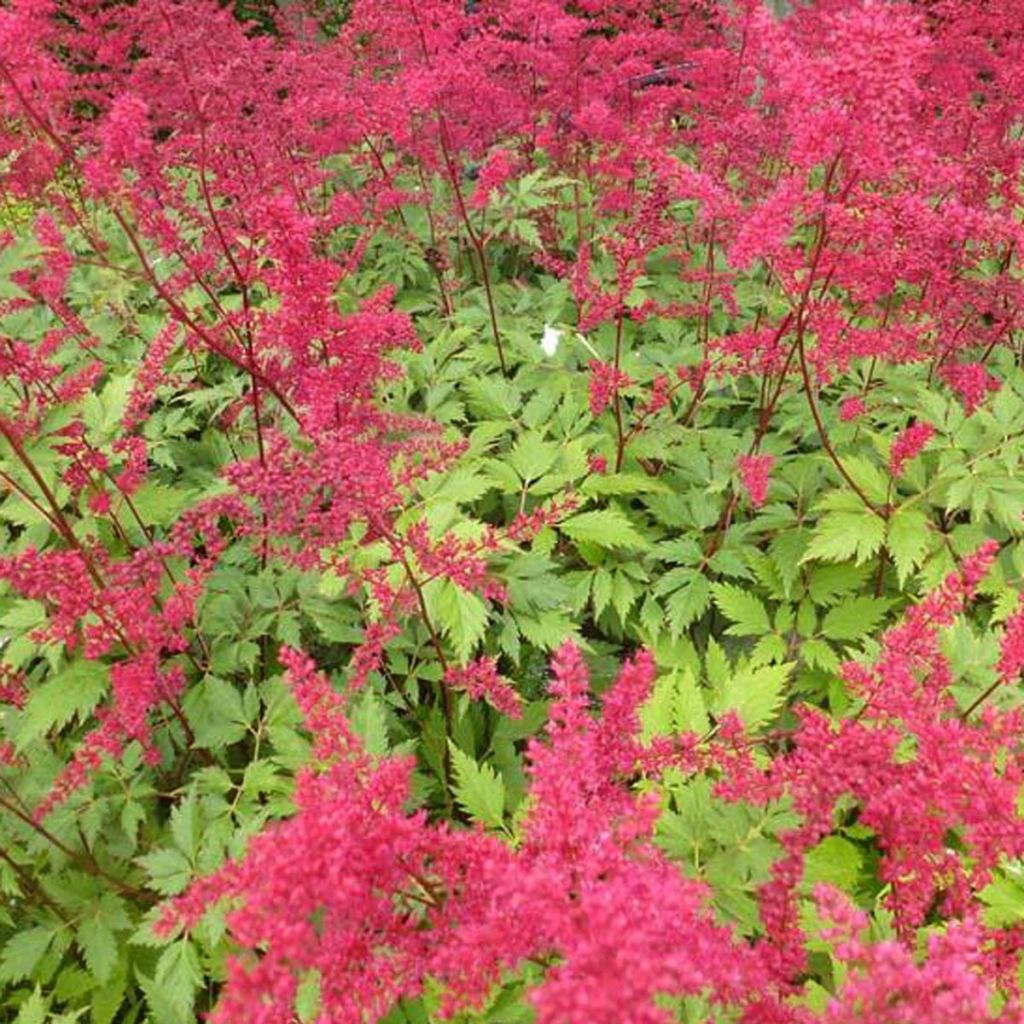

Astilbe arendsii Spinell
Astilbe arendsii Spinell
Astilbe x arendsii Spinell
Arendsii Astilbe, False Goat's Beard, False Spirea
Plant arrived in relatively good condition. It is slowly adapting...
Maud, 18/08/2020
This item cannot be shipped to the selected country
Delivery charge from €5.90
More information
Schedule delivery date,
and select date in basket
This plant carries a 12 months recovery warranty
More information
We guarantee the quality of our plants for a full growing cycle, and will replace at our expense any plant that fails to recover under normal climatic and planting conditions.
From €5.90 for pickup delivery and €6.90 for home delivery
Express home delivery from €8.90.
Does this plant fit my garden?
Set up your Plantfit profile →
Description
Astilbe x arendsii 'Spinell' is one of the largest red hybrids. Its early flowering in long crimson panicles will brighten up the surroundings of water features, moist areas of the garden, or a large container on the terrace. Its feathery plume-like panicles remain very attractive in dried flower arrangements and the foliage takes on beautiful hues in autumn. Suitable for moist soils.
'Spinell' Astilbe is a perennial plant with a dense crown, which forms an upright clump in spring. It is one of the many hybrids created in Germany by Georg Arends, obtained from four species native to the Far East (A. astilboides, A. davidii, A. japonica, A. thunbergii). The plant will reach 90 cm (35in) in height when in flower and will spread over 50 to 70 cm (20 to 28in).
This large astilbe forms a bushy clump and is a long-lived plant, with deciduous compound foliage and dentate dark green leaflets. Flowering occurs from late spring to early summer, in the form of large feathery panicles, 25 cm (10in) long, composed of tiny, soft, bright carmine-red flowers.
'Spinell' Astilbe can easily be grown in a container, as a bog plant, in a flower bed, as a border plant, and used as cut or dried flowers. It can also be grown in a woodland setting, in a hedge, and of course in a flowerbed. Combine with Hostas, Ferns (Athyrium filix-femina), Arums, Beardtongue, and Queen of the Meadows (Schizostylis coccinea 'Major') and Filipendula rubra ‘Venusta'. These plants can be forced in a greenhouse to obtain early flowering.
Arends hybrids have a lower risk of causing allergies, compared with other Astilbes. In Asia, dried leaves are sometimes used as a substitute for tea, and the young stems are cooked and eaten.
Report an error about the product description
Astilbe arendsii Spinell in pictures
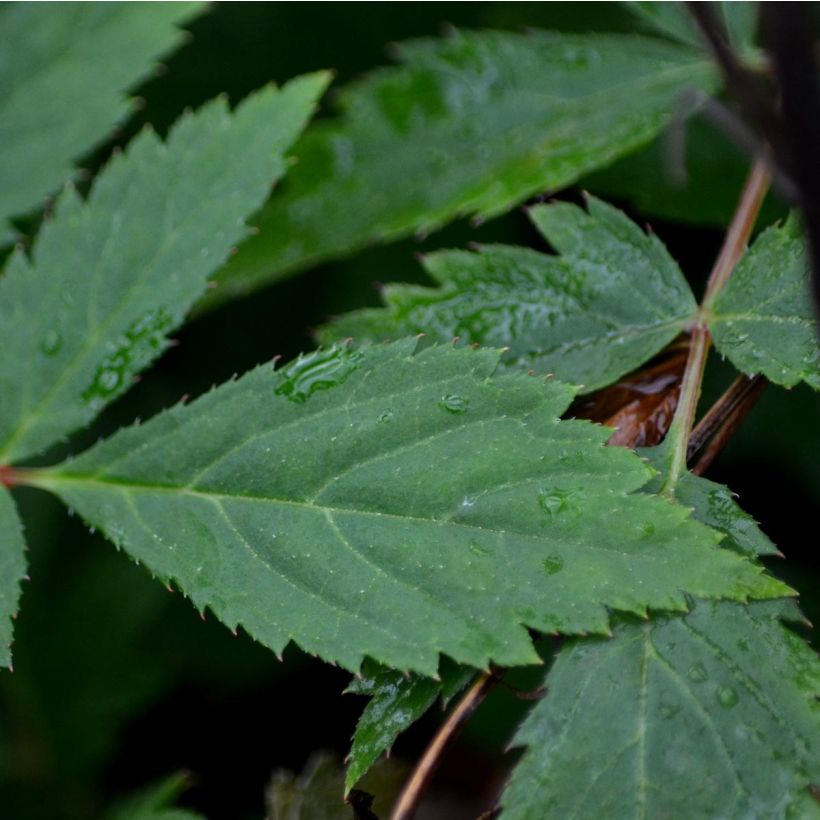

Flowering
Foliage
Plant habit
Botanical data
Astilbe
x arendsii
Spinell
Saxifragaceae
Arendsii Astilbe, False Goat's Beard, False Spirea
Cultivar or hybrid
Other Astilbe - False Goatsbeard
Planting and care
Plant Astilbe x ardensii Spinell in moist to damp, rich, neutral to acidic soil. This hybrid cannot tolerate a lack of water. The plant adapts well to clay soils if they are healthy and fertile. Note that Astilbes do not tolerate being flooded in winter. Plant Astilbe Spinell in partial shade or in a sunny, but not scorching, location: in nature, these plants grow in moist understory. Daily watering will be necessary in hot summers. Prune faded flowers to promote better leaf development. The flower stalks can also be left in place to decorate the garden during winter, simply remove them the following spring. Avoid digging near these plants as the rhizomes develop near the surface. These plants are disease-resistant and rarely attacked by insects.
Planting period
Intended location
Care
-
, onOrder confirmed
Reply from on Promesse de fleurs
Summer flowering perennials
Haven't found what you were looking for?
Hardiness is the lowest winter temperature a plant can endure without suffering serious damage or even dying. However, hardiness is affected by location (a sheltered area, such as a patio), protection (winter cover) and soil type (hardiness is improved by well-drained soil).

Photo Sharing Terms & Conditions
In order to encourage gardeners to interact and share their experiences, Promesse de fleurs offers various media enabling content to be uploaded onto its Site - in particular via the ‘Photo sharing’ module.
The User agrees to refrain from:
- Posting any content that is illegal, prejudicial, insulting, racist, inciteful to hatred, revisionist, contrary to public decency, that infringes on privacy or on the privacy rights of third parties, in particular the publicity rights of persons and goods, intellectual property rights, or the right to privacy.
- Submitting content on behalf of a third party;
- Impersonate the identity of a third party and/or publish any personal information about a third party;
In general, the User undertakes to refrain from any unethical behaviour.
All Content (in particular text, comments, files, images, photos, videos, creative works, etc.), which may be subject to property or intellectual property rights, image or other private rights, shall remain the property of the User, subject to the limited rights granted by the terms of the licence granted by Promesse de fleurs as stated below. Users are at liberty to publish or not to publish such Content on the Site, notably via the ‘Photo Sharing’ facility, and accept that this Content shall be made public and freely accessible, notably on the Internet.
Users further acknowledge, undertake to have ,and guarantee that they hold all necessary rights and permissions to publish such material on the Site, in particular with regard to the legislation in force pertaining to any privacy, property, intellectual property, image, or contractual rights, or rights of any other nature. By publishing such Content on the Site, Users acknowledge accepting full liability as publishers of the Content within the meaning of the law, and grant Promesse de fleurs, free of charge, an inclusive, worldwide licence for the said Content for the entire duration of its publication, including all reproduction, representation, up/downloading, displaying, performing, transmission, and storage rights.
Users also grant permission for their name to be linked to the Content and accept that this link may not always be made available.
By engaging in posting material, Users consent to their Content becoming automatically accessible on the Internet, in particular on other sites and/or blogs and/or web pages of the Promesse de fleurs site, including in particular social pages and the Promesse de fleurs catalogue.
Users may secure the removal of entrusted content free of charge by issuing a simple request via our contact form.
The flowering period indicated on our website applies to countries and regions located in USDA zone 8 (France, the United Kingdom, Ireland, the Netherlands, etc.)
It will vary according to where you live:
- In zones 9 to 10 (Italy, Spain, Greece, etc.), flowering will occur about 2 to 4 weeks earlier.
- In zones 6 to 7 (Germany, Poland, Slovenia, and lower mountainous regions), flowering will be delayed by 2 to 3 weeks.
- In zone 5 (Central Europe, Scandinavia), blooming will be delayed by 3 to 5 weeks.
In temperate climates, pruning of spring-flowering shrubs (forsythia, spireas, etc.) should be done just after flowering.
Pruning of summer-flowering shrubs (Indian Lilac, Perovskia, etc.) can be done in winter or spring.
In cold regions as well as with frost-sensitive plants, avoid pruning too early when severe frosts may still occur.
The planting period indicated on our website applies to countries and regions located in USDA zone 8 (France, United Kingdom, Ireland, Netherlands).
It will vary according to where you live:
- In Mediterranean zones (Marseille, Madrid, Milan, etc.), autumn and winter are the best planting periods.
- In continental zones (Strasbourg, Munich, Vienna, etc.), delay planting by 2 to 3 weeks in spring and bring it forward by 2 to 4 weeks in autumn.
- In mountainous regions (the Alps, Pyrenees, Carpathians, etc.), it is best to plant in late spring (May-June) or late summer (August-September).
The harvesting period indicated on our website applies to countries and regions in USDA zone 8 (France, England, Ireland, the Netherlands).
In colder areas (Scandinavia, Poland, Austria...) fruit and vegetable harvests are likely to be delayed by 3-4 weeks.
In warmer areas (Italy, Spain, Greece, etc.), harvesting will probably take place earlier, depending on weather conditions.
The sowing periods indicated on our website apply to countries and regions within USDA Zone 8 (France, UK, Ireland, Netherlands).
In colder areas (Scandinavia, Poland, Austria...), delay any outdoor sowing by 3-4 weeks, or sow under glass.
In warmer climes (Italy, Spain, Greece, etc.), bring outdoor sowing forward by a few weeks.

































